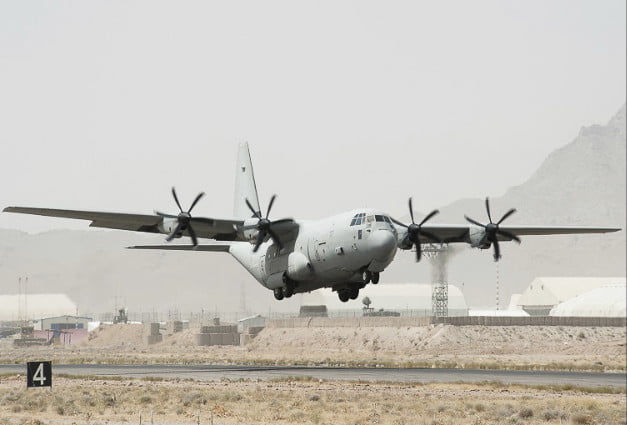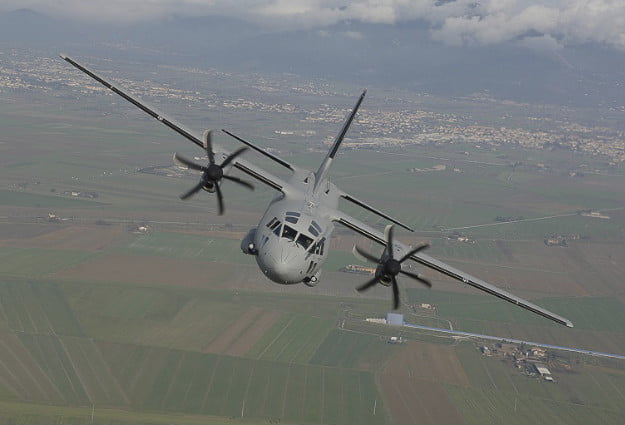2016-01-19 It is has been difficult to shape a more integrated European force.
But the European Air Transport Command is a clear success in that effort.
According to a story on the Italian Ministry of Defense website publish on January 12, 2016, the earlier steps taken by Italy to work within the command have led to their integration within the command.
Transfer of most of the Italian Air Force air transport, air-to-air refueling and aeromedical evacuation assets under the operational leadership of the European Air Transport Command (EATC) has been formally implemented today.
Inaugurated in 2010, EATC is the multinational command tasked with managing and engaging assets assigned by Participating Nations to this European initiative.
Italy has officially joined the EATC on 4 December 2014, when the Air Chief of Staff, during a ceremony attended by Defence Minister Roberta Pinotti, signed Italy’s adhesion to the Agreement to which France, Germany, the Netherlands, Belgium, Luxemburg and Spain were parties.
The “Transfer of Authority” will be implemented for 31 assets, including C-27J, C-130J, and KC-767 aircraft.
The Italian Air Force can regain control of the aircraft based on national requirements thanks to the envisaged Revoke Transfer of Authority mechanism.
The European Air Transport Command, located at Eindhoven (NL), implements the Pooling and Sharing concept in the sector of military air transport, in line with the Common Security and Defense Policy.
Its objective is to improve and optimize the management of available resources, thanks to standardized procedures and the employment of a common fleet, larger than individual countries’ ones, with considerable cost savings.
Italy’s adhesion to EATC is a tangible result that enhances national military air transport capabilities and, in particular, our sectors of excellence, such as a air-to-air refueling and medical airlift in high bio-containment conditions.
http://www.difesa.it/EN/Primo_Piano/Pagine/EATC.aspx
In an interview with the Italian Air Force Chief of Staff, Lt. General Preziosa, the importance of the EATC effort was highlighted.
Preziosa highlighted two other important sharing efforts in Europe, which are designed to enhance capability. “The point of sharing is not simply to share; it is to shape a greater capability to act and with greater and more effective means.”
The first is Italian participation in the European Air Group, located at High Wycombe in the United Kingdom.
Here Italian Air Force aircraft – such as the Tornados and Eurofighters – work to be more effectively integrate in coalition operations, as happened with the UK and Italy operating from an Italian base during operations during what the US called Odyssey Dawn.
The second is Italy entering into the European Air Transport Command (EATC) and committed to EPRC (European Personnel Recovery Centre).
“We are contributing our transport aircrafts and new tankers to the EATC”. Besides Italy is engaged with EAG nations to establish a Personnel Recovery (PR) Centre, based in Italy, in 2015. This centre is addressing a very important operational function (PR), in order to foster joint-combined interoperability through common approaches and common procedures, under a lead service approach. I believe those are simple and tangible examples of what is commonly known as pooling & sharing initiatives.”
And we wrote earlier about the role of the European Air Group in the process of establishing the command, and the EAG itself is an important asset in shaping more effective European defense cooperation and find ways for practical integration.
Question: What is the role of the European Air Group?
BG De Ponti: It is the only multinational entity entirely devoted to airpower issues. And it includes the Air Forces of Spain, France, Italy, Germany, the Netherlands, Belgium and the United Kingdom.
It is set up to be efficient. We have a small permanent staff, which is hosted by the Royal Air Force at High Wycombe. The staff works directly for the seven Air Chiefs and works directly as well with the staffs of those Air Forces.
The EAG is led by a steering group composed of the seven air chiefs; and the permanent staff is run by the Deputy Director and the Chief of Staff, who in this case are the two persons with whom you are discussing the EAG.
Each Air Force provides three staff members and then we have a small administrative support staff.
It is designed to small and agile yet plugged into the operations of the seven Air Forces.
The head of the EAG is a sitting Air Chief, in this case Air Chief Marshal Sir Andrew Pulford from the RAF. The Director, the Deputy Director and the COS serve normally for two years, and the staff provided by the Air Forces normally serves for three years.
Question: What is the focus of attention of the EAG?
BG De Ponti: The EAG tackles airpower issues, which need solutions to enhance interoperability among the member nations.
This can lead to tactical or strategic solutions.
And we have had important achievements to date such as the European Air Transport Command (EATC).
And the recent creation of the European Personnel Recovery Centre is an important step forward which the staff started the process, and went to the Chiefs and they approved going ahead, and then we worked more on the way ahead, and now we will see the Centre set up in Italy later this year.
And this Centre will combine military and civilian expertise and can well become a center of excellence for personnel recovery tasks, both military and civilian. And we are transferring our expertise in training in these areas to the new Centre which illustrates the way we work – we are not adding tasks for us to do and growing staff – we actually are transferring tasks when appropriate to a better placed mechanism.
See an earlier piece on Italy and the EATC:




